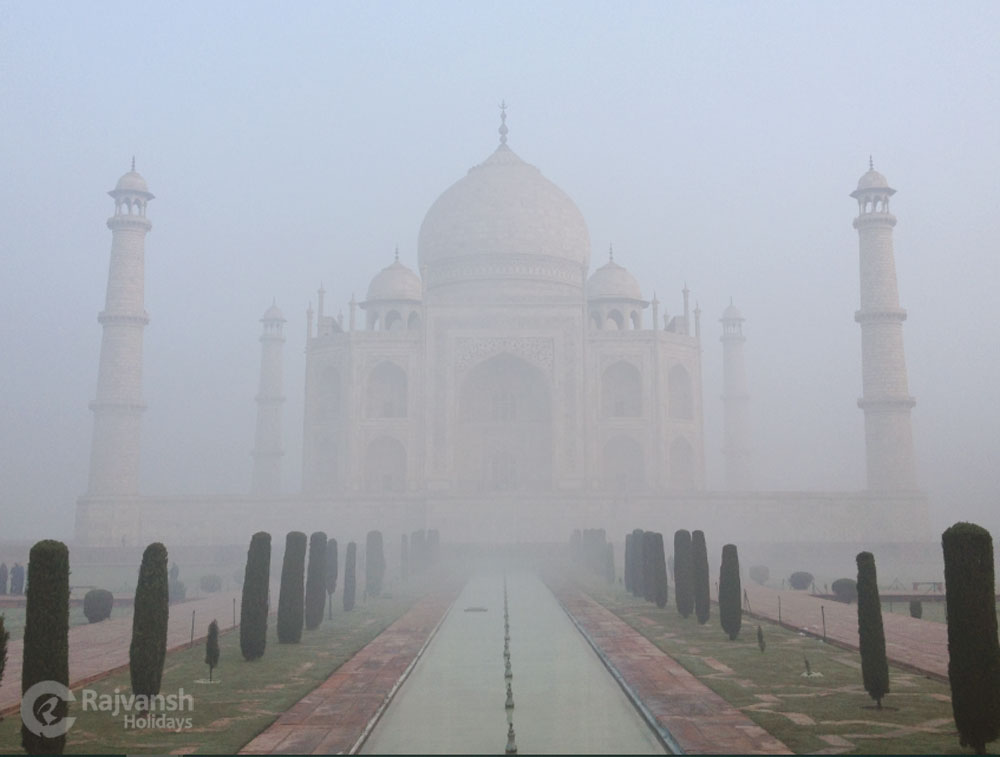The best time to visit Agra, famed for the breathtaking Taj Mahal, is during the winter months, roughly from October to March. Agra experiences extreme temperatures. The winter months offer mild and pleasant weather, with daytime temperatures ranging between 25°C and 12°C (77°F and 54°F). This makes exploring the city and its landmarks, especially the Taj Mahal, more comfortable without the scorching heat of summer or the humidity of the monsoon season.
The Taj Mahal, one of the Seven Wonders of the World, looks particularly stunning in the winter light. The cooler temperatures also make sunrise and sunset visits more enjoyable, providing breathtaking views of the monument in the soft, golden light. The favorable weather allows for comfortable exploration of other historical sites like Agra Fort, Fatehpur Sikri, and Itimad-ud-Daulah’s Tomb without the discomfort of extreme heat or rain.
Keep in mind that, while winter is generally the best time to visit Agra, it’s also the peak tourist season, so booking accommodations and tickets in advance is advisable. Also, early morning or late afternoon visits to the Taj Mahal often offer the best lighting and fewer crowds for a more serene experience.
| Travel Seasons | Min/Max Temperature | Weather |
| April to July | 23-45°C | Summer: Hot |
| July to September | 25-35°C | Monsoon: Moderate rain |
| October to March | 7-35°C | Winter: Pleasant and Cool |
Agra In Summer (April to July)
Agra is situated on the plains of Indo-Ganges in a subtropical area. As a result, the summer is long and scorching, lasting from April until the end of July. The temperature can reach 45 degrees Celsius (113 degrees Fahrenheit) during this time of year. The wind that blows in the summer is called loo. Loo is arid and might cause discomfort in the heat. Summer is the best time to get a good price on hotel bills and to avoid crowds. Remember to bring along some lightweight clothing.
Agra In Monsoon (July–September)
Typically, the monsoon begins near the end of July. However, on occasion, the monsoon is postponed until the beginning of August and concludes by the end of September. The monsoon season brings with it chilly nights and a slightly humid atmosphere. You can enjoy a rainy Agra if you’d like, as the monsoon season won’t be overly damp.
Agra In winter (October–March),
For many people, the main reason why winter is the best time to visit Agra is Agra’s climate in winter. The heat and rain gradually subside, and a pleasant coolness spreads over the city. At the peak of winter, the temperature drops; in some cases, it drops to 2 degrees Celsius. Average winter temperatures range from 8 to 14 °C. Although you may be hampered by the thick fog that envelops Agra in winter, this is the best time to explore the city.
In Agra, winter is a wonderland. There are several celebrations to go to. The Taj Mahotsav is the most well-known. This 10-day celebration takes place every year in February, near the Taj Mahal. You can take in and purchase beautiful handicrafts created by regional artisans, as well as take in folk and ghazal performances, delicious food, and cultural events. October to November are when the Bateshwar Fair takes place. This town is located 70 kilometers from Agra and is home to over 108 temples; however, Lord Shiva is the focus of this celebration. Swim in Yamuna’s sacred waters and see the cattle market and livestock. If you don’t feel like traveling, there are festivities in Agra. The Ram Bharat is another highlight of this season. This is one of the special occasions for Hindus: the marriage procession of Lord Rama, which many devotees come to see in Agra from different parts of cities and towns.
Please feel free to contact us at any time for any travel information, tour bookings, tickets, transportation, or hotel bookings in India. Just call or WhatsApp us at +91 98370 44720. You can also visit our official website: www.tajmahaltourguide.com

